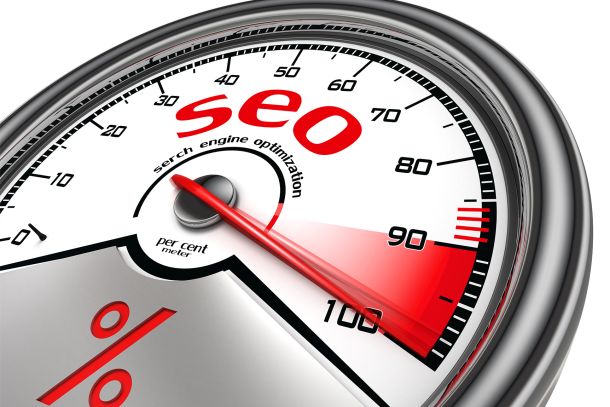On-Page SEO Essentials for Small to Medium Size Businesses
In the world of digital marketing, search engine optimisation (SEO) plays a crucial role in driving organic traffic to websites. And when it comes to SEO, on-page optimisation is an essential component that every small to medium size business should prioritise. On-page SEO refers to the practice of optimising individual web pages to rank higher on search engine result pages (SERPs) and improve the overall visibility of your website. In this article, we will explore some on-page SEO essentials that can help small businesses optimise their websites and improve their online presence.
Conduct Keyword Research
Keywords are the foundation of any successful SEO strategy. Start by identifying relevant keywords that are highly searched by your target audience. Use keyword research tools to identify the most relevant and high-traffic keywords for your industry. Once you have a list of keywords, strategically incorporate them into your website’s content, headings, URLs, and meta tags. However, be cautious not to overuse keywords, as it can negatively impact your website’s ranking.
Optimise Title Tags and Meta Descriptions
Title tags and meta descriptions are crucial elements for on-page SEO. The title tag appears as the main headline in search engine results and should include relevant keywords and a compelling description of the page’s content. The meta description is a brief summary that appears below the title tag in SERPs and should be optimised to attract users to click on your website. Both the title tag and meta description should be unique, concise, and relevant to the page’s content.
Create High-Quality and Engaging Content
Content is king in the world of SEO. Developing high-quality, informative, and engaging content is vital for small businesses. Craft content that provides value to your target audience and incorporates relevant keywords naturally. Ensure that your content is well-structured with proper headings, subheadings, and paragraphs. Use bullet points, numbered lists, and images to break up the text and make it more visually appealing. Additionally, regularly update and add fresh content to your website to keep it relevant and attract search engine crawlers.
Optimise URL Structure
URLs should be concise, descriptive, and user-friendly. Include relevant keywords in the URL to provide search engines and users with a clear understanding of the page’s content. Avoid using lengthy URLs with unnecessary parameters or numbers. Instead, use hyphens to separate words and make your URLs easily readable.
Improve Page Loading Speed
Website loading speed is a critical factor for both user experience and SEO. Slow-loading websites not only frustrate users but also receive lower rankings from search engines. Optimise your website’s loading speed by compressing images, minifying CSS and JavaScript files, and leveraging browser caching. Use online tools to test your website’s loading speed and identify areas for improvement.
Implement Header Tags
Header tags (H1, H2, H3, etc.) are essential for organising your content and signaling its structure to search engines. The H1 tag represents the main heading of the page and should include relevant keywords. Subheadings (H2, H3, etc.) can be used to break down content into sections and make it more scannable for readers. Proper usage of header tags not only improves the readability of your content but also helps search engines understand the hierarchy and importance of different sections on your webpage.
Optimise Images
Images play a significant role in enhancing the visual appeal of your website. However, they can also impact your website’s loading speed if not optimised correctly. Compress images without compromising their quality to reduce file sizes. Use descriptive file names and include relevant alt tags to help search engines understand the content of the images. Optimised images can contribute to better user experience and improved SEO.
Make Your Website Mobile-Friendly
With the increasing use of mobile devices for browsing the internet, having a mobile-friendly website is no longer optional; it’s a necessity. Mobile optimisation not only enhances the user experience but also impacts your website’s search engine rankings. Ensure that your website is responsive and adapts to different screen sizes. Test your website’s mobile-friendliness using Google’s Mobile-Friendly Test tool and make necessary adjustments to improve the user experience on mobile devices.
Utilise Internal and External Linking
Internal linking refers to linking to other relevant pages within your website, while external linking involves linking to reputable and authoritative websites outside of your domain. Both types of linking are crucial for on-page SEO. Internal links help search engines understand the structure of your website and navigate through your content. It also helps distribute the authority and ranking power across your website. External links provide additional resources and references for your audience and demonstrate your website’s credibility and authority. When incorporating internal and external links, use relevant anchor texts that accurately describe the linked page’s content.
Optimise for Local SEO
If your small to medium size business primarily operates in a specific geographical location, optimising for local SEO is essential. Local SEO focuses on improving your website’s visibility for local searches. To optimise for local SEO, include your business name, address, and phone number (NAP) on your website’s footer or contact page. Register your business with Google My Business and other local directories. Use location-specific keywords throughout your content, meta tags, and headings. Encourage customers to leave reviews and ratings on platforms like Google and Yelp. These local SEO practices can significantly improve your website’s visibility within your target location.
Monitor and Analyse Your Website’s Performance
Lastly, continuously monitor and analyse your website’s performance using web analytics tools. Track key metrics such as organic traffic, bounce rate, conversion rate, and keyword rankings. Analysing this data will provide insights into what’s working and what needs improvement. Identify pages with low traffic or high bounce rates and optimise them accordingly. Regularly review your SEO strategy and make adjustments based on the data to ensure ongoing improvement and success.
On-page SEO is crucial for small to medium size businesses looking to improve their online presence and drive organic traffic to their websites. By implementing these on-page SEO essentials, including keyword research, optimising title tags and meta descriptions, creating high-quality content, improving page loading speed, utilising header tags, optimising images, making your website mobile-friendly, utilising internal and external linking, optimising for local SEO, and monitoring and analysing your website’s performance, you can lay a solid foundation for a successful SEO strategy. For professional guidance and assistance in optimising your small business website, consider consulting an experienced SEO consultancy like MR Marketing SEO Consultancy based in Oxfordshire. With their expertise, you can effectively navigate the ever-changing landscape of on-page SEO and achieve sustainable online growth.



